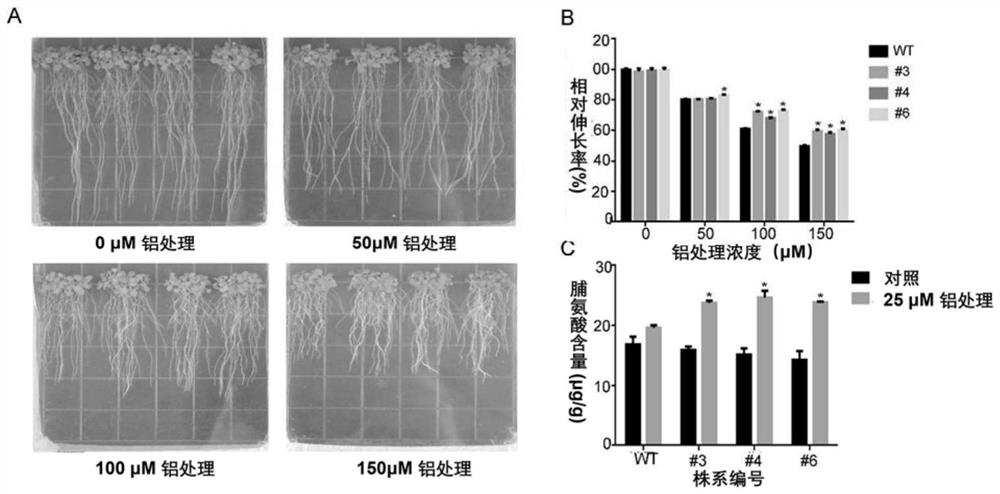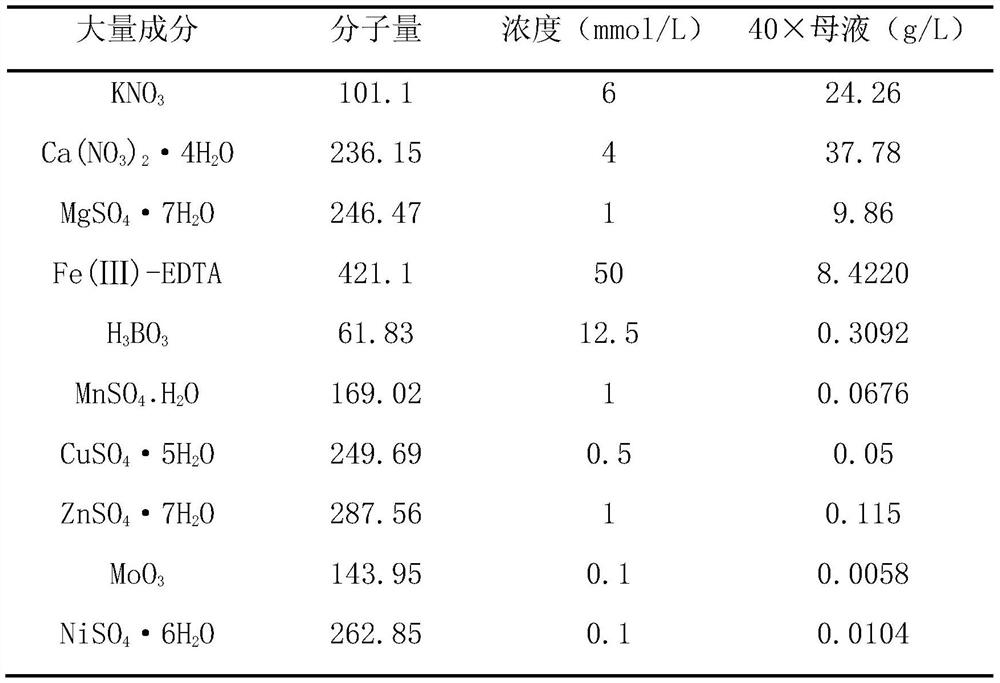Aluminum-resistant related gene GsERF1 and encoding protein and application thereof
A protein and coding technology, which is applied to the aluminum resistance-related gene GsERF1 and its encoded protein and application fields, can solve problems such as differences in the ability to resist aluminum toxicity, and achieve the effect of increasing relative elongation.
- Summary
- Abstract
- Description
- Claims
- Application Information
AI Technical Summary
Problems solved by technology
Method used
Image
Examples
Embodiment 1
[0044] Example 1. Cloning and expression of soybean aluminum tolerance-related gene GsERF1
[0045] 1. Cloning of soybean aluminum tolerance-related gene GsERF1
[0046] The root total RNA of wild soybean material BW69 (aluminum-resistant wild soybean resource) was extracted with a plant total RNA extraction kit (TR02, GeneMark), and its integrity was detected by 1% agarose electrophoresis.
[0047] The total RNA was reverse transcribed to obtain cDNA, and the cDNA was synthesized according to PrimeScript TM RT reagent Kit with gDNA Eraser kit manual operation.
[0048] Design the following primers:
[0049] Sequence 3: 5'-ATGGAGAAAGAGAGAGGAGAG-3'
[0050] Sequence 4: 5'-TTAGTCTTCGTTATTCCTTC-3'
[0051] Using the above cDNA as a template, PCR amplification is performed with the primers shown in sequence 3 and sequence 4 to obtain a PCR amplification product.
[0052] The above PCR amplification system is a PCR reaction solution (50 μl system) configured in the following o...
Embodiment 2
[0075] Embodiment 2, the acquisition of transgenic GsERF1 Arabidopsis
[0076] 1. Transgenic GsERF1 Arabidopsis
[0077] 1. Obtaining the recombinant vector
[0078] The recombinant plant expression vector pTF101.1-GsERF1 is a plasmid obtained by replacing the fragment between the Xba I and Sac I restriction sites of the pTF101.1 vector with the GsERF1 gene shown in Sequence 1, and the full-length sequence of GsERF1 is inserted forward to the CaMV35S promoter.
[0079] 2. Recombinant bacteria
[0080] The recombinant vector pTF101.1-GsERF1 was transformed into Agrobacterium EHA105 (BioVector NTCC Inc.) with a Bio-rad electric shock transformation instrument to obtain recombinant Agrobacterium EHA105 / pTF101.1-GsERF1, and PCR was performed using sequence 5 and sequence 6 primer pairs Amplified, 126bp is positive recombinant bacteria.
[0081] 3. Transgenic GsERF1 Arabidopsis
[0082]Agrobacterium-mediated transformation of Arabidopsis thaliana using the floral dip method[J]...
PUM
 Login to View More
Login to View More Abstract
Description
Claims
Application Information
 Login to View More
Login to View More - R&D
- Intellectual Property
- Life Sciences
- Materials
- Tech Scout
- Unparalleled Data Quality
- Higher Quality Content
- 60% Fewer Hallucinations
Browse by: Latest US Patents, China's latest patents, Technical Efficacy Thesaurus, Application Domain, Technology Topic, Popular Technical Reports.
© 2025 PatSnap. All rights reserved.Legal|Privacy policy|Modern Slavery Act Transparency Statement|Sitemap|About US| Contact US: help@patsnap.com



